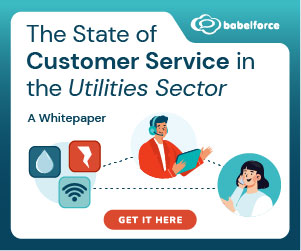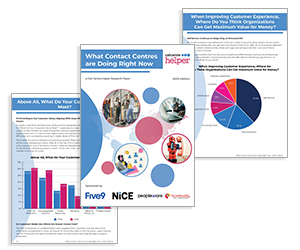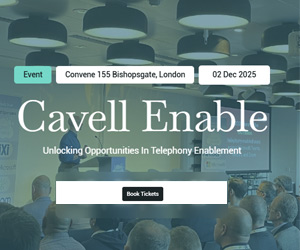Have you ever considered that complaints are not interruptions to be managed, rather they are a mirror reflecting the true customer experience?
No? Then, perhaps you should…
Here, Stephen Miller, Complaints Manager with over 10 years’ experience working with brands such as Vitality and Sky, explains how to use complaints to your advantage – and shift your thinking beyond just resolving them.
In High-Performing Operations, Complaints Are Not Buried; They Are Dissected, Learned From, and Acted Upon
For contact centre professionals, every complaint is an unfiltered insight into what customers value, where processes fail, and how expectations evolve. This is intelligence you cannot buy through surveys or focus groups.
Handled well, complaints can strengthen loyalty, uncover systemic issues, and spark innovation. They reveal gaps competitors may overlook. They also test the culture of your organization: do you see a complaint as a nuisance to close quickly, or as an opportunity to demonstrate excellence?
In high-performing operations, complaints are not buried; they are dissected, learned from, and acted upon. The data is used to drive change.
The conversations reshape policies, products, and service delivery. Evidence shows that organizations which treat complaints as a strategic asset consistently outperform those that treat them as a cost to minimize.
Time to start using this insight to your advantage? Here are 7 steps to help you overhaul your complaints handling process:
1. Map Every Stage – From the Moment a Complaint Is Received to the Final Follow-Up
You cannot improve a complaints process you have not examined under the microscope.
For contact centre professionals, the first step is brutal honesty: where does your process break down, and why? Too often, teams patch over issues instead of exposing them. A proper audit forces you to confront the uncomfortable truths hidden in your operation.
Map every stage, from the moment a complaint is received to the final follow-up. Watch real cases move through your system.
Where do they slow down? Where does information get lost? Where do outcomes vary depending on who handles the case? These are not minor inefficiencies; they are symptoms of a deeper problem.
Regulators have made it clear: strong complaint handling relies on robust management information, clear escalation paths, and measurable accountability. Small flaws – unreturned calls, vague notes, inconsistent decisions – can expose systemic weakness.
Ask yourself:
- Where do complaints stall, and why?
- How is information captured, shared, and acted on?
- Are the same issues resurfacing because the root cause is never addressed?
An audit does more than reveal gaps; it prioritizes what to fix first. Without it, you are working blind, and in today’s environment, that is a risk no contact centre can afford.
2. Define a Clear Policy and Procedure So Your Team Knows Exactly What Counts as a Complaint (and What Doesn’t)
A strong complaints process begins with absolute clarity. If your team is unsure what counts as a complaint, who can raise one, or how it should be handled, you have already lost control.
For contact centre leaders, this is not an administrative exercise; it is about setting the standard that shapes every customer interaction.
Start by defining what a complaint is. It is not limited to formal letters or escalated cases. Any expression of dissatisfaction, across any channel, is a complaint and deserves attention.
Make it clear that customers, prospects, and even third parties have the right to raise concerns. Then set firm expectations for timelines and ownership so there is no ambiguity about who is accountable at each stage.
From there, build a procedure that leaves no room for inconsistency:
- Listen and acknowledge quickly, signalling that the customer has been heard.
- Record and categorize accurately to capture the data you need.
- Investigate thoroughly, not just superficially.
- Resolve transparently, explaining what was done and why.
- Follow up to confirm the customer’s satisfaction and close the loop.
This level of structure does more than keep regulators happy. It creates confidence. Staff know exactly what to do, customers see a professional and consistent process, and leadership gets reliable insight from clean data.
Banks, insurers, and other regulated industries use this approach because it works. The question is: does your contact centre hold itself to the same standard?
3. Map the Five Essential Elements
High-performing complaint programmes share a common DNA: a structured flow that leaves nothing to chance.
For contact centre professionals, following this structure is not bureaucracy – it’s the difference between firefighting and building a process that actually drives change.
The most effective frameworks follow five core stages:
- Intake and acknowledgement – Capture the complaint quickly and show the customer they have been heard.
- Logging and categorization – Record details accurately and classify them so trends can be identified.
- Investigation and root cause analysis – Go beyond symptoms to uncover the real issue.
- Resolution planning and execution – Fix the problem with a clear, fair outcome.
- Follow-up and continuous improvement – Confirm satisfaction and use insights to prevent recurrence.
This sequence creates visibility, accountability, and consistency. It ensures serious issues escalate fast and that lessons from every case are retained rather than lost in the system.
Root cause analysis is where many contact centres fall short. Too often, teams stop at the obvious cause and move on. Intelligent complaint handling digs deeper – defining the problem precisely, asking who, what, where, when, why, how, and how many, as well as mapping the timeline and sequence of events to understand not just what went wrong, but why it happened.
Structured techniques – such as the five whys, fishbone diagrams, or failure mode effect analysis – turn vague problems into actionable insight.
This is the data that feeds corrective action and drives systemic learning. Without it, you are solving the same problems over and over, and your contact centre remains stuck in a costly cycle.
Watch the video below to hear Stephen explore techniques for root cause analysis:
4. Use Data and Tools to Drive Efficiency
Data is the backbone of effective complaint handling. A detailed complaints register allows you to track every case, spot recurring themes, and measure outcomes.
Use KPIs such as average response time, resolution rate, and recurrence rate to assess performance and identify risk. Trends reveal systemic issues that demand action, guiding targeted training and process improvements.
Go further by segmenting data to uncover hidden patterns, especially for vulnerable customer groups – something many firms overlook.
Equip your team with technology that simplifies logging and reporting. Even basic dashboards enhance visibility, speed, and consistency, turning raw complaints into intelligence your operation can act on.
5. Apply AI and the Human Touch to the Points Where They Each Bring the Biggest Benefits
Artificial intelligence is transforming complaints handling, but its value lies in how you use it. For contact centres, AI excels at the repetitive and the routine.
It can automate triage, prioritize cases by urgency, and send acknowledgements instantly at scale. It analyses sentiment, clusters similar complaints, and detects trends no human could see as quickly.
In India’s banking sector, AI now scans millions of complaints to flag ATM failures in real time. At the BBC, it groups similar complaints, allowing human agents to focus on the cases that need nuance.
Yet AI has limits. It cannot replicate empathy, read emotional context, or make complex judgements that rebuild trust. Sensitive complaints, cases involving vulnerable customers, and situations where authenticity matters must remain human-led.
Customers can detect when a response feels automated, and nothing erodes confidence faster than feeling unheard.
The most effective approach is a hybrid one: AI handles scale and speed, while people handle the conversations that define your reputation.
For examples of where AI is transforming the role of agents to deliver exceptional CX, read our article: The Superhuman Touch – How to Blend Agents and AI for Maximum Impact
6. Make Sure Escalation Protocols Are Explicit to Prevent Errors Slipping Through
Deploying AI in complaints handling requires control, transparency, and a human safety net. The best contact centres use AI to support agents, not replace them.
Define clear roles so staff know when to rely on AI and when to override it. Escalation protocols must be explicit to prevent errors slipping through.
Transparency is critical. Customers and employees should understand when AI is used and why. Explainable AI builds confidence and meets regulatory expectations for traceability. Train teams to interpret AI outputs, identify mistakes, and balance data with human judgement.
Monitor performance continuously, tracking satisfaction, error rates, and bias. Regulations such as the EU’s AI Act demand human oversight proportionate to the risks involved. The goal is a hybrid model where AI drives efficiency while people safeguard fairness and trust.
For advice on creating an escalation matrix, read our article: How to Design an Escalation Matrix for Call Centre Agents
7. Create an Implementation Roadmap to Drive Continuous Improvement
Transforming your complaints process requires a structured roadmap. Start by auditing your existing systems to uncover gaps, then define and document a clear policy and procedure that everyone can follow. Build a complaints register to capture baseline data and measure progress over time.
When introducing AI, begin small. Pilot it in low-risk areas, such as auto-acknowledgements, before scaling further. Train staff to interpret AI outputs critically and apply human judgement where needed. Monitor performance through robust metrics, adjusting where necessary to maintain quality.
Next, embed root cause analysis into governance using proven frameworks like 8D and CAPA to prevent recurring issues. Share insights regularly with leadership and audit teams to drive continuous improvement.
Finally, keep training your workforce on new AI tools and emerging complaint trends. A staged roll-out gives staff confidence, ensures stability, and increases readiness to embrace innovation.
If you are looking for advice on creating a culture of continuous improvement in your contact centre, read our article: Make Continuous Improvement Part of Your DNA
A Truly Effective Complaints Process Shapes the Future of Your Contact Centre
A truly effective complaints process does far more than close cases; it shapes the future of your contact centre and your business.
Clarity, data, and compassion are not optional extras – they are the foundations. Without them, processes become inconsistent, customers lose confidence, and teams operate in the dark.
The most successful operations make their complaint handling systematic, visible, and unashamedly proactive. They treat every complaint as an opportunity to learn, not a cost to minimize.
They leverage AI to handle the scale and complexity of data, but they never forget that empathy, judgement, and trust belong to people. Customers know the difference, and they reward the businesses that get it right.
For contact centre leaders, this is a challenge: are you building a process that merely resolves, or one that transforms? When you get it right, complaints stop being a burden. They become your competitive advantage, your risk management tool, and your strongest driver of loyalty.
Written by: Stephen Miller, Complaints Manager at Vitality (previously Complaints Specialist at Sky)
For more advice on how to improve complaints handling in your contact centre, read these articles next:
- Can AI Really Handle Customer Complaints?
- Customer Complaints? Try This 10-Point Plan
- 7 Effective Ways to Monitor Complaints
Author: Stephen Miller
Reviewed by: Jo Robinson
Published On: 1st Oct 2025 - Last modified: 27th Nov 2025
Read more about - Customer Service Strategy, Complaints, Customer Experience (CX), Customer Service, Policies and Procedures, Service Strategy, Stephen Miller, Top Story











































